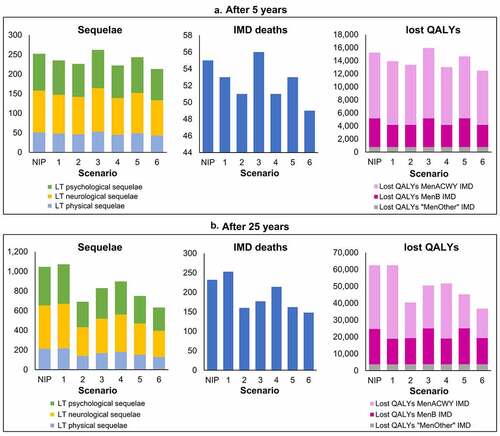Figures & data
Figure 1. Six vaccination strategies modeled. Overview of the vaccines included for infants and/or toddlers and/or adolescents in each vaccination strategy modeled and in the current National Immunization Program (NIP).

Figure 2. IMD incidence in Chile from 2009 to 2019 – by serogroup in the overall population, and in infants. IMD incidence can change unpredictably. The rapid increase in serogroup W (MenW) cases (from 2011) led to the introduction of MenACWY vaccination (from 2012 in the ‘W-135 Plan’ and from 2014 in the National Immunization Program [NIP]). IMD incidence rates are highest in infants. Abbreviations: MenACWY, quadrivalent meningococcal conjugate vaccine; MenB/MenW/MenC/MenY/MenZ/MenNT, serogroups B/W/C/Y/Z/NT IMD.
![Figure 2. IMD incidence in Chile from 2009 to 2019 – by serogroup in the overall population, and in infants. IMD incidence can change unpredictably. The rapid increase in serogroup W (MenW) cases (from 2011) led to the introduction of MenACWY vaccination (from 2012 in the ‘W-135 Plan’ and from 2014 in the National Immunization Program [NIP]). IMD incidence rates are highest in infants. Abbreviations: MenACWY, quadrivalent meningococcal conjugate vaccine; MenB/MenW/MenC/MenY/MenZ/MenNT, serogroups B/W/C/Y/Z/NT IMD.](/cms/asset/a831165c-d349-4c47-aed7-5640b2df5e50/khvi_a_1996808_f0002_oc.jpg)
Figure 3. Predicted IMD cases (2013–2018) assuming no vaccination compared with observed cases (2013–2018) after vaccination programs were introduced in 2012. Prediction of invasive meningococcal disease (IMD) cases (2013–2018) based on observed cases (2008–2012) and assuming no vaccination program was introduced in 2012, compared with observed cases (2013–2018) following the implementation of vaccination strategies to control the outbreak.
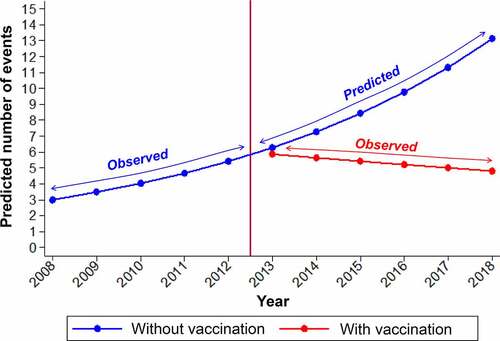
Table 1. Vaccination parameters for 4CMenB and MenACWY
Figure 4. Percent reduction in IMD incidence after 5 years and 25 years – impact of introducing each strategy versus the current NIP. Percent reduction in IMD incidence with each vaccination strategy compared with the National Immunization Program (NIP) after 5 years and 25 years of vaccination. Abbreviations: IMD, invasive meningococcal disease; MenACWY, quadrivalent meningococcal conjugate vaccine; 4CMenB, four-component meningococcal serogroup B vaccine.
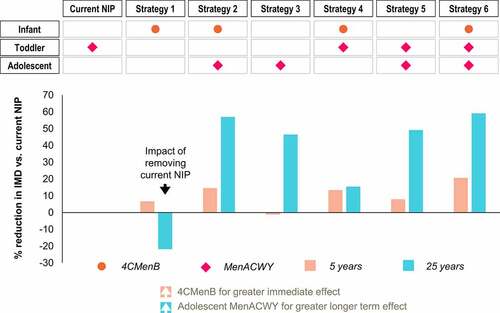
Figure 5. Percent change in IMD cases per year with vaccination strategies versus current NIP over 25 years, (a) for all ages and (b) for ages 0–4 years old. Percent change in invasive meningococcal disease (IMD) cases with each strategy compared with the current National Immunization Program (cNIP) over 25 years (a) for all ages, and (b) for ages 0–4 years.
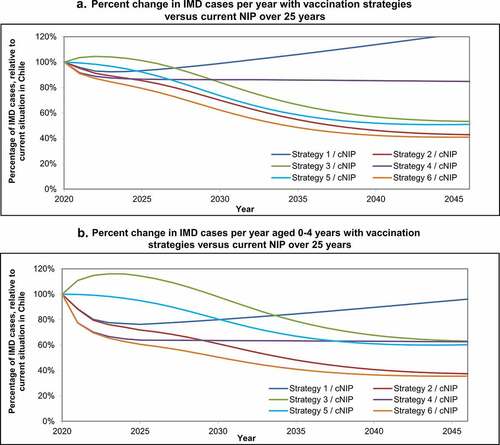
Figure 6. Impact of vaccination strategies: cumulative IMD cases by age group, (a) after 5 years and (b) after 25 years. Impact of vaccination strategies on the cumulative number of invasive meningococcal disease (IMD) cases by age group compared with the current National Immunization Program (cNIP), (a) after 5 years of vaccination, and (b) after 25 years of vaccination. Abbreviations: 4CMenB, four-component meningococcal serogroup B vaccine; MenACWY, quadrivalent meningococcal conjugate vaccine.
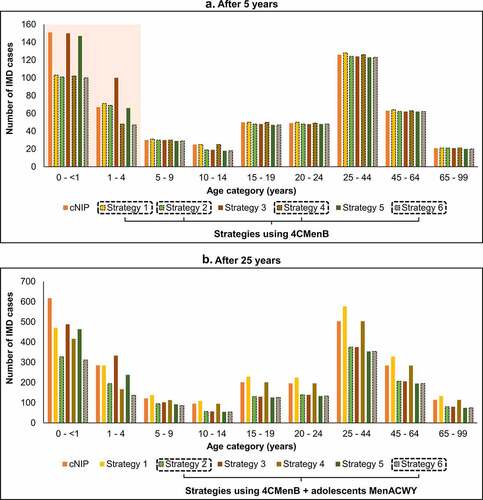
Figure 7. Impact on long-term sequelae, IMD deaths and lost QALYs due to IMD with each strategy versus the current NIP, after (a) 5 years and (b) 25 years. The impact of each vaccination strategy (1–6) compared with the National Immunization Program (NIP) in Chile on invasive meningococcal disease (IMD)-related long-term (LT) physical, neurological, and psychological/behavioral sequelae; IMD deaths; and lost quality-adjusted life-years (QALYs) due to MenACWY, MenB, or “MenOther” IMD is presented after 5 years and after 25 years of vaccination.
